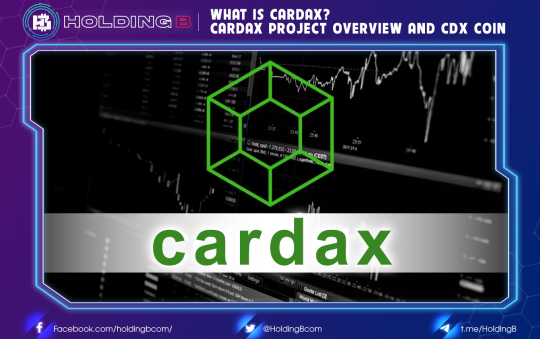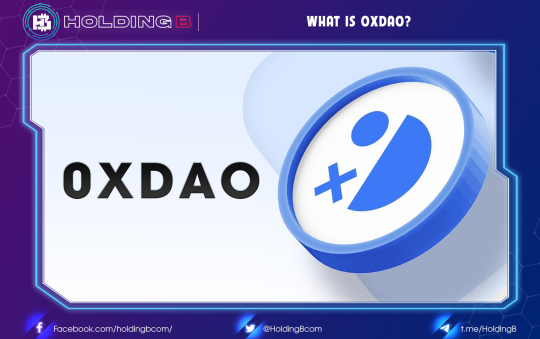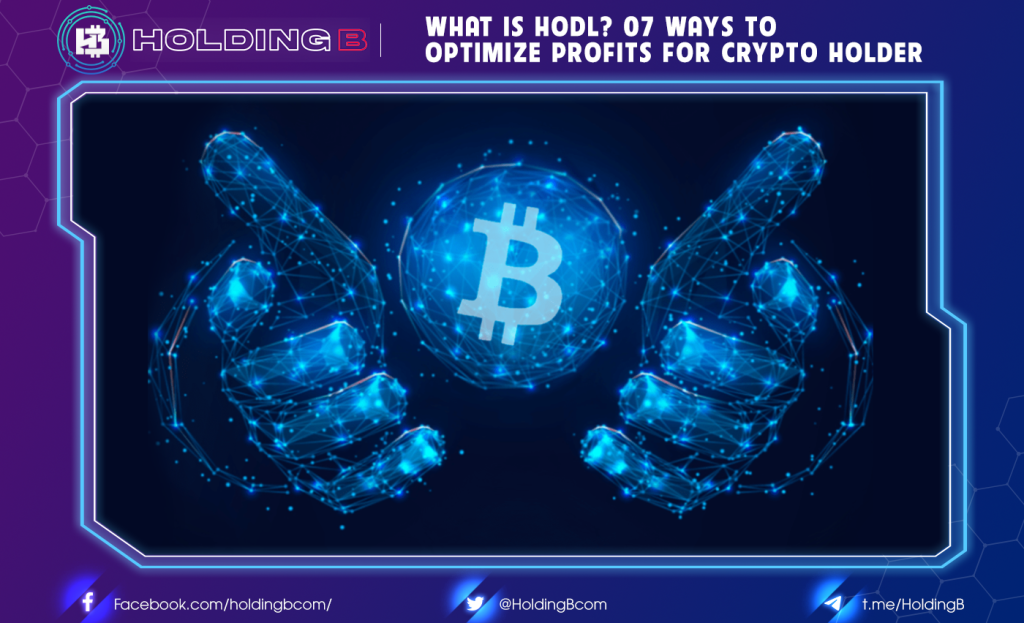
What is HODL?
HODL is Crypto’s term, rewritten from the word Hold, only users who buy coins then hold for a long time, usually months or more.
The term HODL originates from a member on the Bitcointalk forum, while drunk, he posted a short topic about holding BTC, but misspelled the word hold as hodl.

With the humor of the misspelling, along with the enthusiastic call for content, it was quickly responded by many other members on the forum. A lot of people have also shown interest, interacted and responded to the post in a positive way. The concept of “HODL” was also born from there. Later, HODL was also translated by many people with the meaning of Hold On for Dear Life.
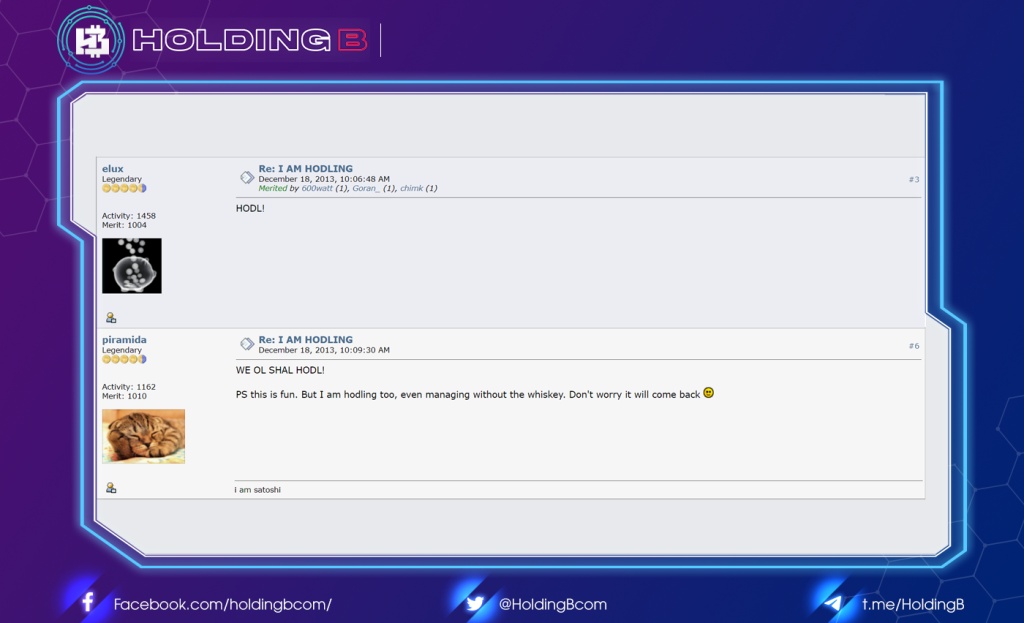
What is the difference between Holder and Trader?
Profit target
Unlike Traders who only take short profits in a short time, Holders will aim for large profits, usually 100% or more.
Market Perspective
Usually, Traders will look at the market for a short time, and will also use many H1 and H4 charts, the highest possible is the D chart.
And also because of different goals, they will use different tools: Holders often buy Spot, Traders often trade with leverage.
But for Holder, the lowest chart used is H4 and usually D. There are even some famous investors who use both W and M charts.
Method of analysis
In Crypto, the community often says “Investor” which means the majority of Holders. Holders often use fundamental analysis to see the potential of a project. Of course, you can still use technical analysis, but not every day.
For Traders, technical analysis is a daily “food”, they look at charts almost continuously to make short-term profits.
When to hold coins?
Hold coin is only suitable for those who like slowness, do not want to look at the chart every day. In addition, traditional investors who step into this market will also be easier to get used to holding coins, based on the somewhat similar project screening properties.
And as I have analyzed, both Trader and Holder have different properties, so you can see which side you are suitable for.
Neither form is completely good or bad, even the form of dividing the capital into two parts: Hold and Trade, is also one of the popular ways with many players.
Criteria for choosing coins to hold: Which coin should I hold?
The only criteria to choose coin hold is: Coin gives us the best return. Because everyone who enters this market is also for profit.
But to say which coin has potential, depends on each person’s point of view:
- Capital: Large capital often choose large-cap coins with little profit, but are safe; Less capital often wants to play riskier with small-cap coins for high profit.
- Analysis: Each person will have a different analysis, so for this person, it is just a “junk” coin, but from another person’s point of view, it is a “hidden gem”.
- Play with others: If you play with other people, of course, you will also hold differently.
Therefore, there is no standard to choosing a coin or say that you have to buy this coin or buy that coin.
Knowledge Holder needs to grasp
Typical ecosystems and tokens within it
I will classify tokens into typical ecosystems below. Some tokens will run on both networks. I divide tokens according to different ecosystems with the purpose of helping you easily choose suitable profit optimization methods.
Some typical ecosystems and tokens belong to those systems:
- Ethereum: ETH, UNI, SUSHI, BNT, CRV, AAVE, MKR,…
- Binance Smart Chain: BNB, CAKE, BAKE, 1INCH, XVS, ALPHA,…
- Solana: SOL, SRM, RAY, FTT, OXY, FIDA,…
- Polkadot: DOT, KSM, REEF, XOR, POLS, PHA, LIT, OM,…
- Polygon: MATIC, QUICK, AAVE, EASY,…
- Terra: LUNA, MIR, ANC,…
- Fantom: FTM, SPIRIT, BOO, EST,…
- Near: NEAR.
- Avalanche: AVAX, PNG, XAVA, PEFI, SNOB,…
Methods to optimize profits when Hold Coin
There are many methods for you to optimize your profits by withholding coins. Each method will have different advantages and disadvantages. Profit and risk will go hand in hand, you should have an appropriate capital allocation strategy.
I will briefly summarize some of the methods below:
- CEX Staking: Staking receives interest right on CEX exchanges like Binance,…
- DEX Staking: Staking receives interest on native tokens of DEX exchanges like PancakeSwap,…
- Foundation Staking (Node Validator Staking): Staking for tokens in the field of blockchain platforms such as BNB, SOL, DOT, LUNA,…
- IEO, IDO Staking: Staking to enjoy the benefits of participating in IEO, IDO.
- Lending: Lending on Lending Defi platforms.
- DEX Farming: Get rewarded for providing liquidity (Farming) for DEX exchanges.
- Yield Aggregator Farming: Farming on interest-optimized platforms.
Thus, we have 3 main ways to optimize profits:
Staking: Hold and lock a certain amount of coins to get rewards from them. Simply put, you will send and lock your coins to a platform that allows Staking. The reward will be based on the user’s effort, including staked coin amount & stake duration.Lending: Use your coin to lend to others through Lending platforms, then you will get back the principal and interest as the original agreement.Farming: Using coins to participate in providing liquidity for projects that need liquidity such as DEX decentralized exchanges, Lending platforms.
7 ways to optimize profits when holding coins
CEX Staking
CEX (Centralized Exchange) is a centralized exchange managed by a 3rd party (the company/organization that owns the exchange). All electronic assets you deposit into your account on the exchange are managed and controlled by that company/organization.
Basic information:
- Form: Saving coins/tokens that CEX exchanges support.
- Complexity: Easy, stake right on the trading floor.
- Benefits: Low – medium APR interest.
- Note: Deadline for submission, release time after unstake.
- Implementation Platform
Implementation Platform
Each exchange will support staking different tokens, please refer to the links below for more details:
- Binance: https://www.binance.com/en/pos
- Huobi: https://www.huobi.com/en-vi/financial/earnings/
- OKEx: https://www.okex.com/earn
- Gate: https://www.gate.io/en/hodl
- Kucoin: https://pool-x.io/
- MXC: https://www.mxc.com/pos/list
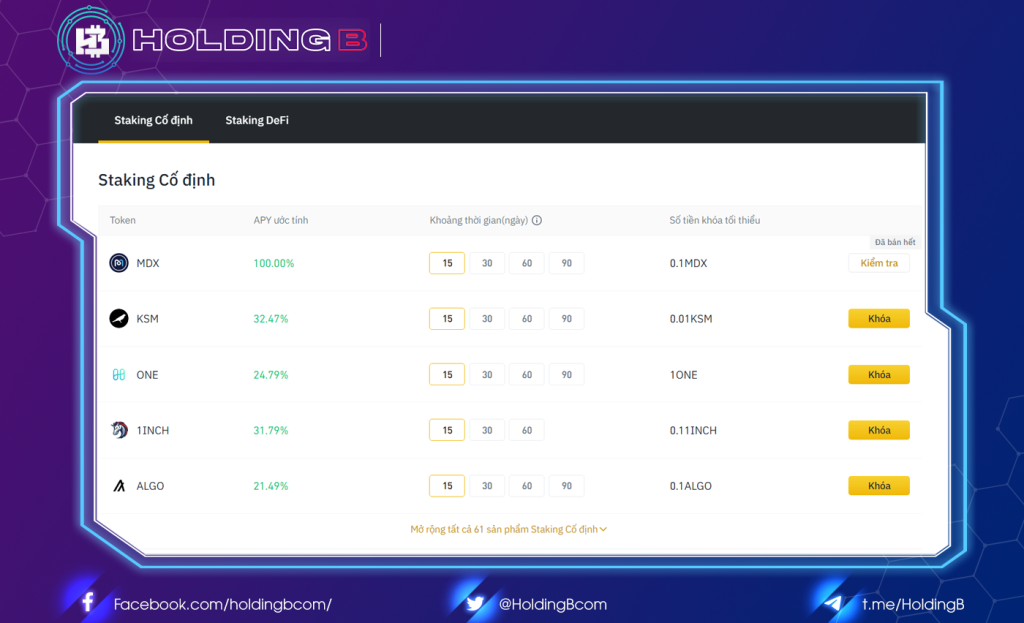
DEX Staking
DEX (Decentralized Exchange) is a decentralized cryptocurrency exchange, built and operated on the Blockchain platform.
DEX allows buying and selling transactions to take place peer-to-peer on the Blockchain network without going through any intermediary organizations.
Basic information:
- Form: Staking native tokens of DEX to receive interest. This is a form of single token staking, there will be DEX support, DEX does not support staking a single native token.
- Complexity: Medium-Requires knowing how to use a non-custodial wallet.
- Benefits: Medium-high APR interest.
- Note Transaction fees.
Implementation platform:
- Ethereum: Sushiswap (SUSHI).
- Binance Smart Chain: Pancakeswap (CAKE).
- Solana: Raydium (RAY).
- Fantom: SpiritSwap (SPIRIT).
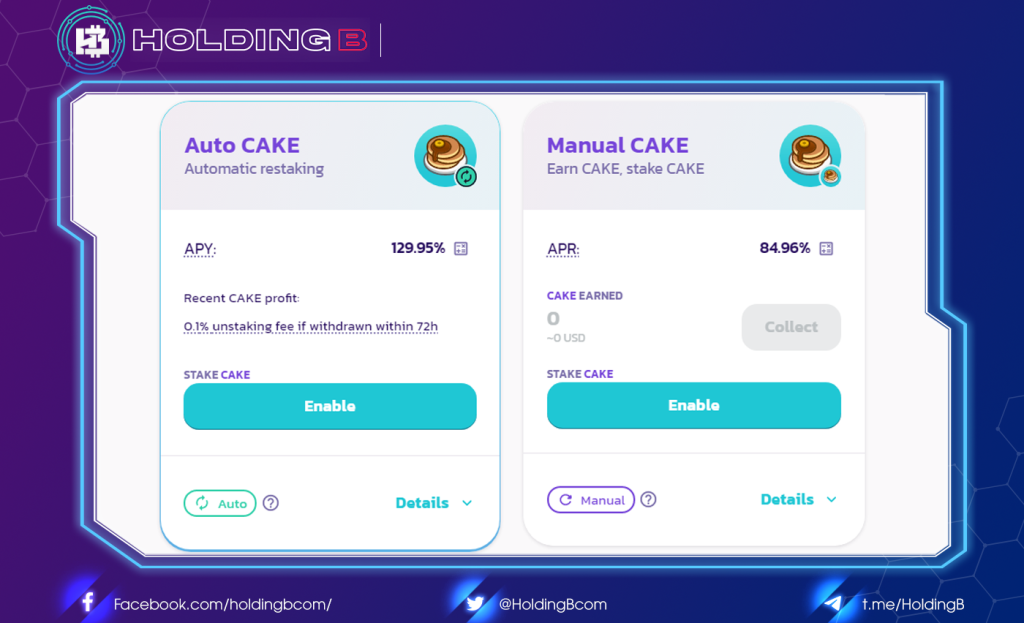
Foundation Staking
Basic information:
- Form: Staking tokens to validator nodes to receive interest. Usually projects in the field of Infrastructure.
- Complexity: Medium. Requires knowing how to use a non-custodial wallet.
- Benefits: Low – medium APR interest.
- Note: Transaction fees, release time after unlocking, the reputation of Validators.
- Implementation platform:
Implementation platform:
Each ecosystem will have its native token and all will be staking through the project’s Node Validators, for example, Ethereum has ETH, Binance Smart Chain has BNB, Solana has SOL, Polkadot has DOT, Polygon has MATIC, Terra has LUNA, Fantom has FTM, NEAR has NEAR, Avalanche has AVAX.
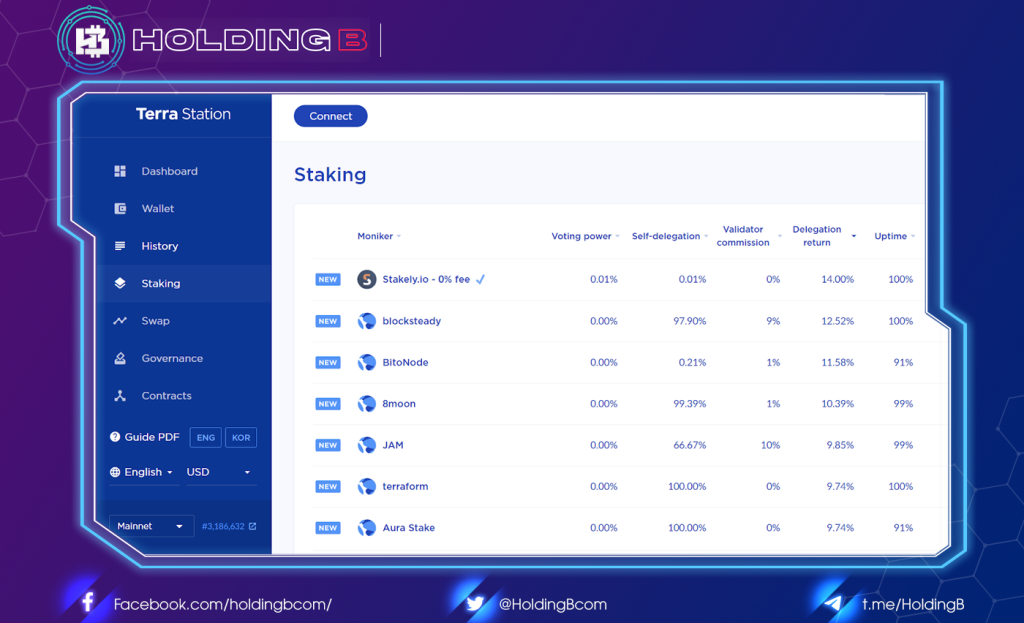
IEO, IDO Staking
IEO (Initial Exchange Offering) is a form of crowdfunding through an offering of tokens on Crypto exchanges.
Similar to IEO, IDO (Initial DEX Offering) is also a form of fundraising through a token sale. However, the difference here is that IDO will raise capital on AMM fundraising platforms such as Poolz, Polkastarter, etc. And IDO will usually have 2 pools, one pool for the community, the other pool for users holding the platform token. foundation.
Basic information:
- Form: Staking native tokens of IEOs, IDO Platforms to enjoy the benefits of participating in the IDO sale.
- Complexity: Medium. Requires knowing how to use a non-custodial wallet.
- Benefits: The right to participate in buying tokens.
- Note: Transaction fee, release time after unstake.
IDO Platforms:
Binance Launchpad.
Huobi Prime.
OKEx Jumpstart.
Kucoin Spotlight.
…
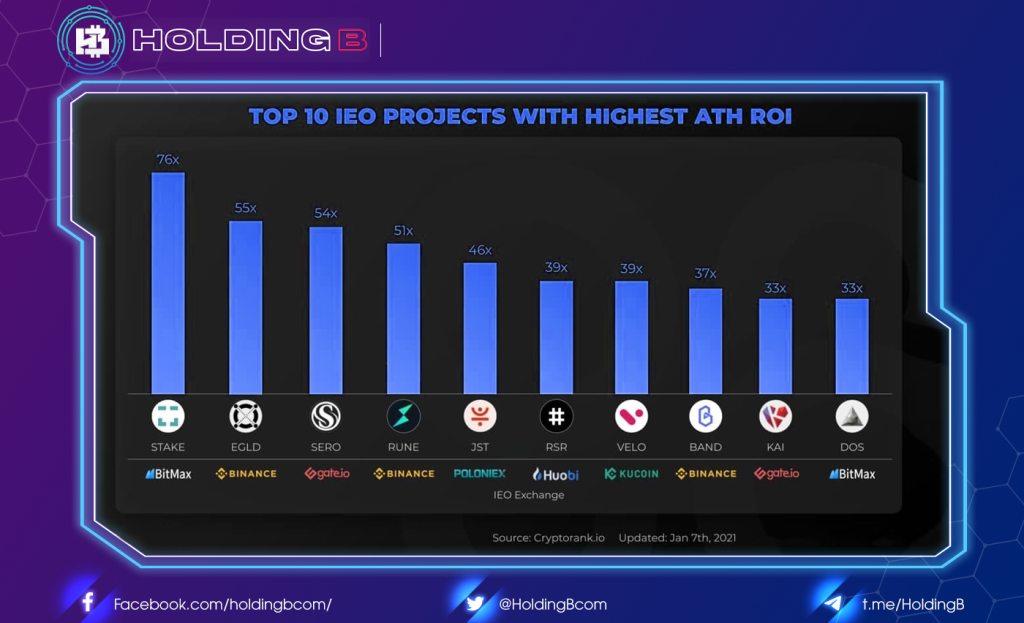
IDO Platforms:
Ethereum: Polkastarter, DAO Maker,…
Binance Smart Chain: PancakeSwap,…
In addition, there are still many other Launchpads
Lending
Lending (lending) is a form of users using their assets or money to lend to other Borrowers (borrowers) at a certain interest rate. After some time, Lenders (lenders) will receive back the principal and interest as originally agreed.
Basic information:
Form: Lending holding assets to optimize profits by lending.
Complexity: Medium. Requires knowing how to use a non-custodial wallet.
Benefits: Low – medium APR interest.
Note: Transaction fee, release time after unlocking.
Implementation platforms:
- Ethereum: Aave, Compound, MakerDAO, Cream Finance, …
- Binance Smart Chain: Venus, Cream, Alpha, ForTube, UniLend, EasyFi,…
- Polygon: Aave, EasyFi.
- Terra: Anchor.
- Fantom: Cream Finance.
Lending methods between platforms are relatively similar.
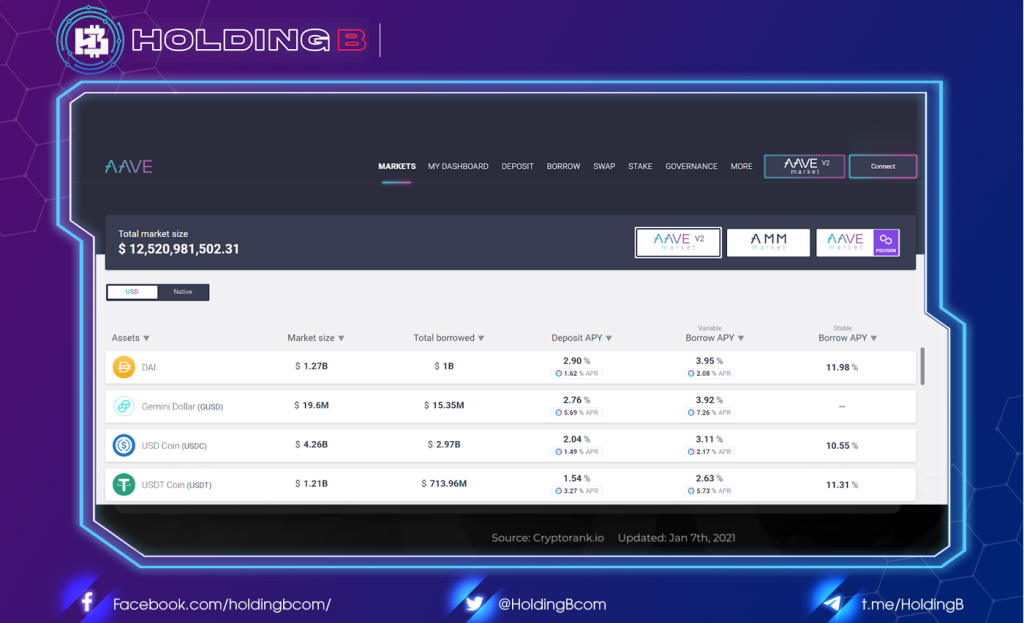
DEX Farming
Farming (or Yield Farming) is a term that refers to users trying to generate as much profit as possible from their crypto assets, through providing liquidity to DeFi protocols (Decentralized Finance – Decentralized Finance). central).
Basic information:
- Form: DEX Farming is a form of providing liquidity for the DEX to receive distribution rewards from the transaction fees collected from the DEX, usually the reward will be the native token of the DEX.
- Complexity: Medium. Requires knowing how to use a non-custodial wallet.
- Benefits: Relatively high APR interest.
- Note: Transaction fees, Rug-pull, Impermanent Loss.
Implementation platform:
- Ethereum: Uniswap, Sushiswap, Bancor, Curve,…
- Binance Smart Chain: Pancake, DODO, Bakery, MDEX,…
- Solana: SerumSwap, Raydium, Orca,…
- Polygon: QuickSwap,…
- Fantom: SpiritSwap, SpookySwap, Froyo Finance, …
- NEAR: Ref Finance,…
- Avalanche: Pangolin, Penguin Finance, YetiSwap,…
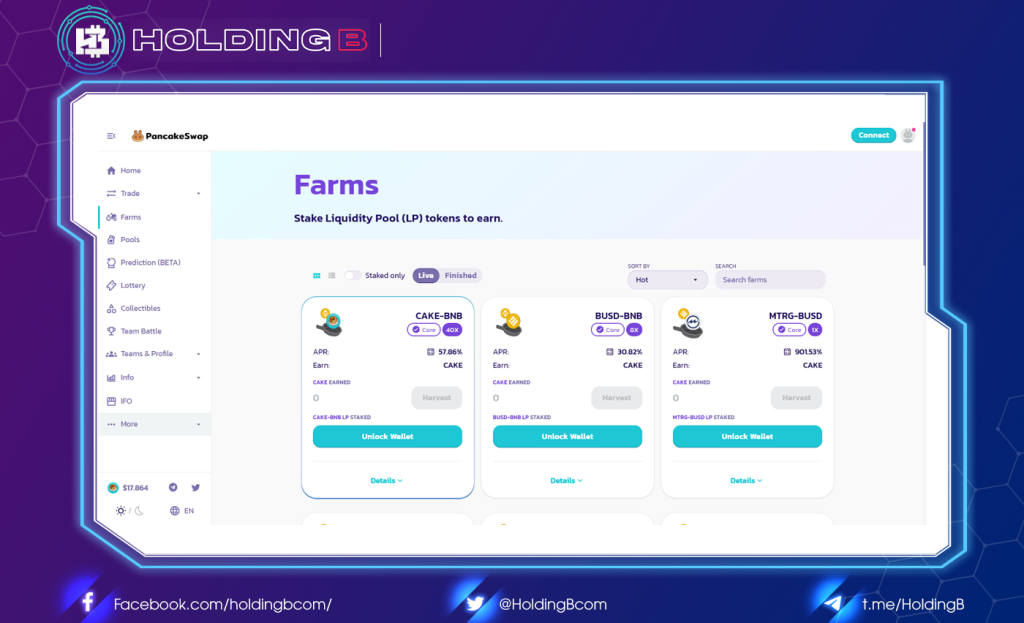
Yield Aggregator Farming
Basic information:
- Format: Yield Aggregator will help optimize Farming profits by comparing between many different pools. In addition, you can also be rewarded with a native token of the Yield Farming platform.
- Complexity: Medium. Requires knowing how to use a non-custodial wallet.
- Benefits: Relatively high APR interest.
- Note: Transaction fee, Rug pull, Impermanent Loss.
Implementation platform:
- Ethereum: Yearn Finance, Alpha Homora, Harvest Finance,…
- Binance Smart Chain: Pancake Bunny, Beefy Finance, AutoFarm, ACryptos,…
- Solana: SolFarm.
- Fantom: Popsicle Finance, Ester Finance, Liquid Driver,…
- Polygon: Beefy Finance, Adamant,…
- Avalanche: Beefy Finance, Yield Yak,..
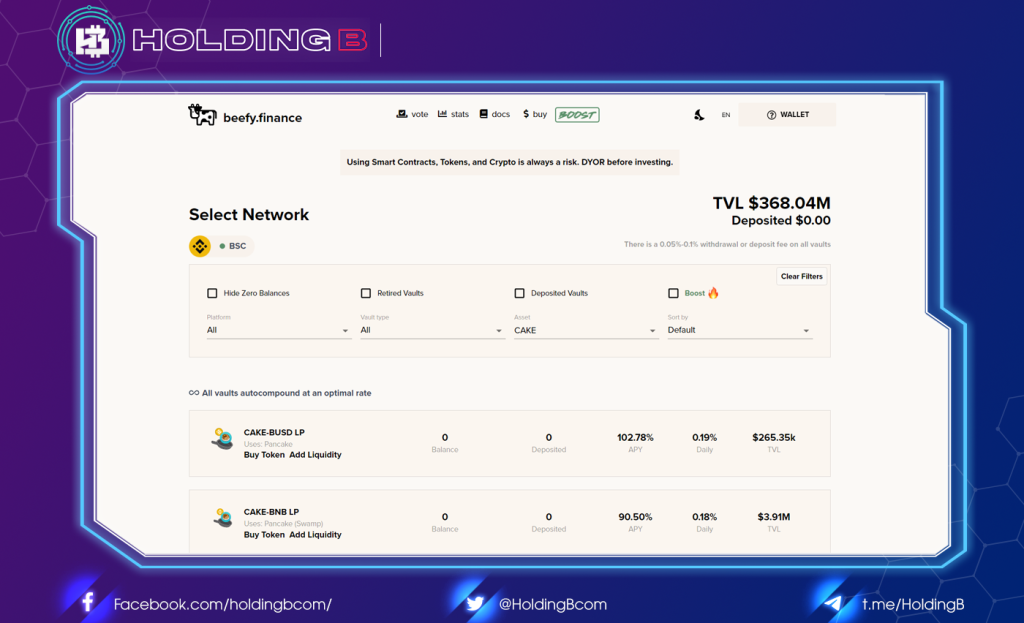
Note when Hold coin to optimize profit
- Release time after unstake: You need to carefully review the terms of staking, mainly for CEX staking and Foundation Staking, because the token release time after unstake can be up to 2 weeks and you may need to use it. for other purposes.
- Rug pull: This is a very popular form for you to participate in Farming token pairs with low liquidity. They will inject liquidity into the pool to lure “baby fish” to provide liquidity, then make a liquidity withdrawal in large quantities and suddenly cause the token price to collapse.
- Hacked or Smart Contract Error: Defi projects all operate on Smart Contracts, so there will be vulnerabilities that make hackers attack appropriate money from Protocol. You should choose Defi projects with a large Total Value Lock and have completed the Audit.
There are also many other important reasons, that’s why I advise you to allocate capital to many different protocols.
See ya in the next article !
Don’t forget to follow useful articles about Crypto Market from team Holding B !!!
- Telegram Channel: https://t.me/HoldingBcom
- Telegram Group : https://t.me/HoldingB
- Website : https://holdingb.com/
- Twitter : https://twitter.com/HoldingBcom


